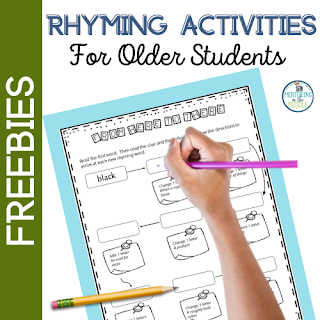The past few years have affected our kids' reading and this summer may have you concerned. Does your child, or do your students need to work on skills that should be mastered by now?
You already know that there's a strong correlation between comprehension and reading fluency, so what can you do? Anything that closes the gap a bit will have long-term consequences,
These activities don't take a ton of time, maybe 10 minutes or so a day. So let's get going!
You want your upper elementary and middle school students to:
- read more than 100 words per minute
- recognize multiple words automatically
- make few errors
- self-correct errors
- understand what they read
Rhyming activities are one fun way to work on phonemic awareness. At the upper elementary level, students learn that not all words that sound alike are spelled the same way. Seeing some of these words repeatedly helps those words become more meaningful.
Believe it or not, nonsense words are a great tool for helping students master fluency. Why? Because when they start to sound them out, they're using the same tools for mastery that you want with real words. But the pressure's off. It's okay if they mispronounce the words because they know they're silly.
Here's a FREE list of nonsense words that I created for my students.
Reading pyramids
I've written about reading fluency activities here, especially the way they helped students feel. By the upper elementary grades, kids know who struggles to read and who doesn't. And the kids who struggle often feel very self-conscious.
When I designed "reading pyramids," it was to give students practice with the repetition of common words. What surprised me was how much the kids enjoyed using these! These were good to work on alone or with a partner, and because students could see improvement happen rapidly, they wanted to keep working on them. That's a WIN in my book!
These are perfect for summer!





No comments
Post a Comment